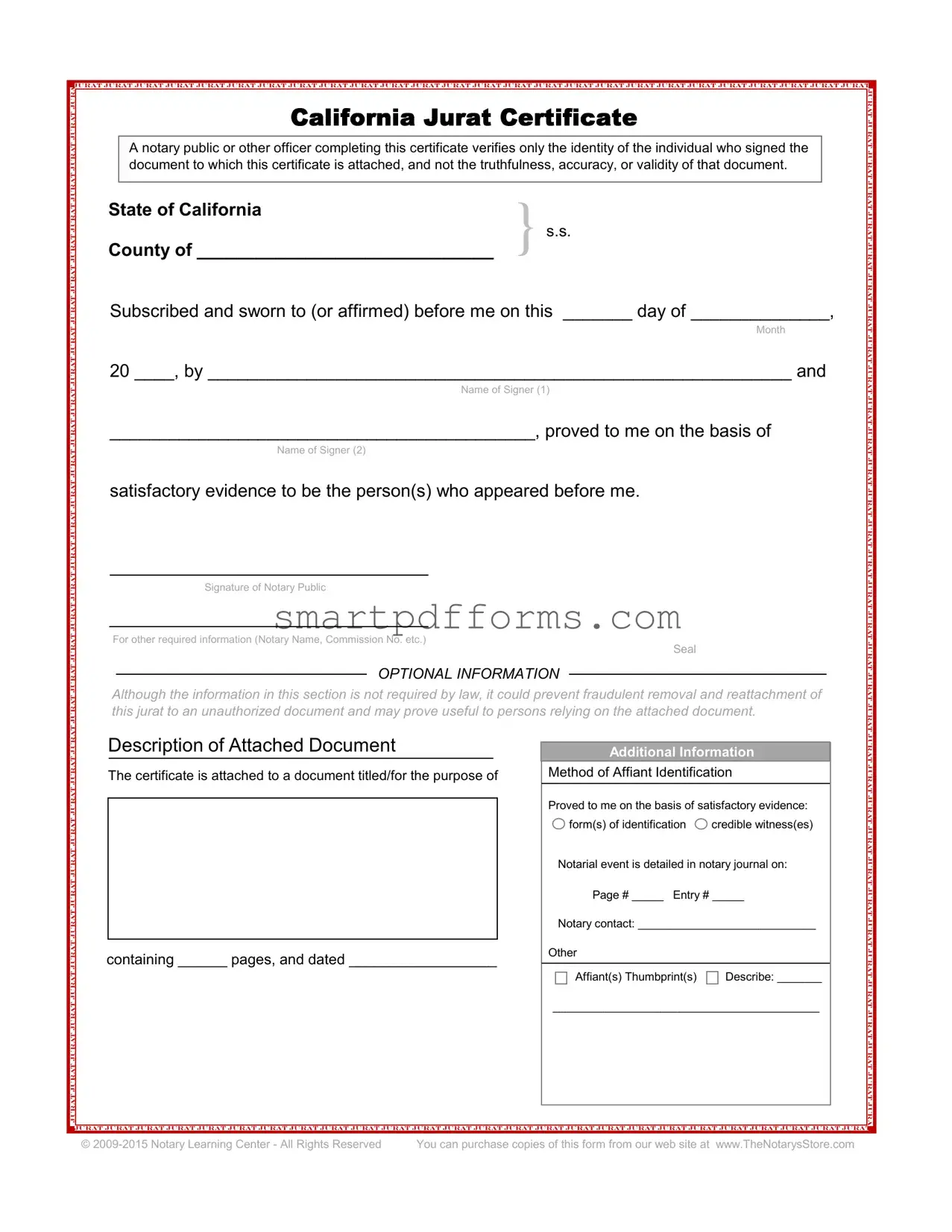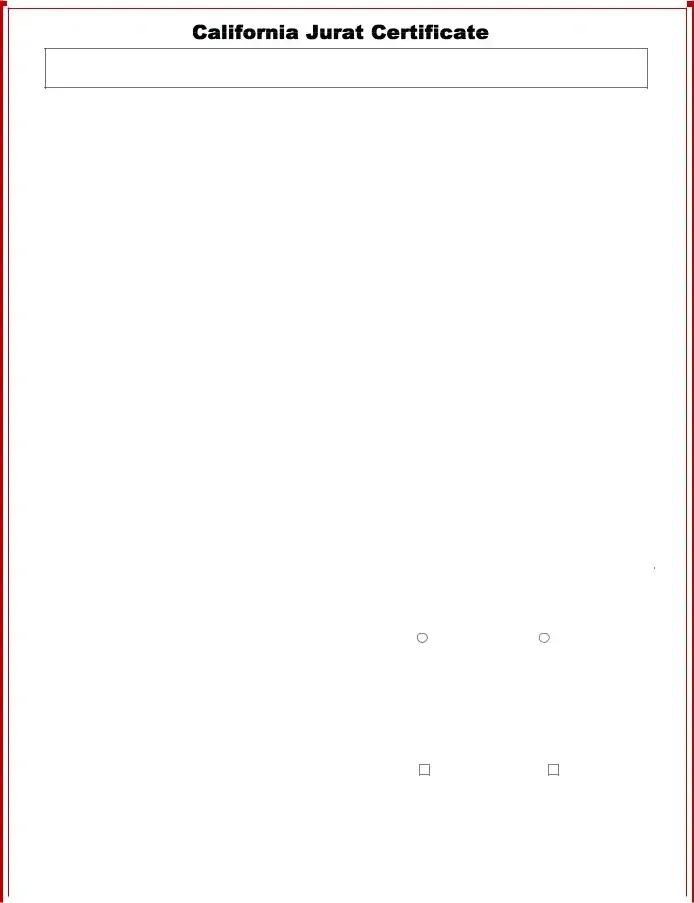Blank California Jurat PDF Template
The California Jurat form is a legal document used to certify that a signer has sworn to or affirmed the truthfulness of the content within a document under penalty of perjury. This certification is crucial for documents to be considered legally valid and binding. To ensure your document meets the necessary legal standards, fill out the form by clicking the button below.
Make This Document Now

